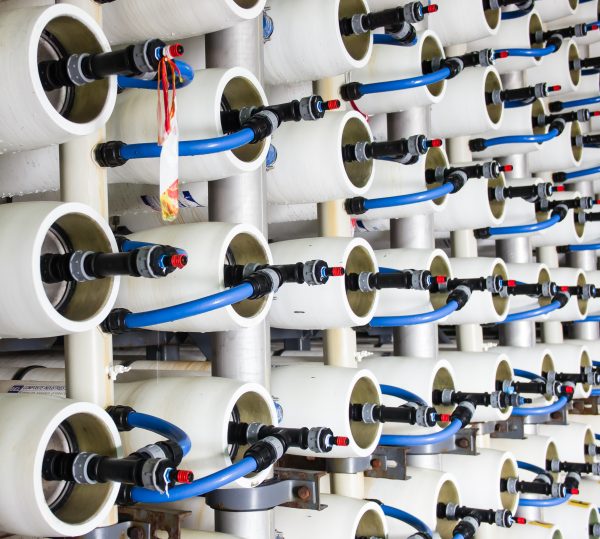Feedwater is driven into the Reverse Osmosis system by a high-pressure pump. The pressure drives water through a semi-permeable membrane, forcing contaminants and other inorganic substances to be separated from the water.
The rejection rate of this process can be as high as 99% of dissolved contaminants. For example; if the feed water source had a conductivity of 500µS/cm, you would expect the permeate (product) stream to have a conductivity of ~5µS/cm.
The pure water that passes through the RO membrane is called permeate, and the water that carries the contaminants is called reject, or concentrate.
This separation process allows water to be filtered into its purest form, to leave a water product that is free from organic bacteria, colloids, dissolved ions and pyrogens.
How Does RO Affect Your Business?
Reverse Osmosis will benefit your business by providing a consistent supply of pure water for various processes.
As water is a primary resource in many manufacturing processes, Reverse Osmosis will eliminate the risk of contaminants that may cause essential equipment to be damaged.
Should your business run the risk of contaminated water, this can dramatically affect the businesses ability to function.
For example; equipment may become damaged due to a build-up of scale, resulting in costly downtime of machinery.
A review by Deloitte revealed that over half of 185 global companies in water-related sectors have experienced negative impacts from water-related challenges in the past five years, which goes to show that above any sector in the world, the water industry is business critical.
From our experience of working closely with businesses who rely on water, we know that water management is a priority.
If the water is in any way contaminated or even reduced, it can mean the closure of the business which can cost thousands or millions of pounds from one day alone.
The reputational repercussions can also occur if the public are made aware of any water issues, causing not only costly fines but also a negative effect on the company’s brand reputation.



